Journey back to the humble beginnings of Apple Computer in 1976, a company born from the vision of two Steves – Jobs and Wozniak. From a garage startup to a global tech titan, Apple’s history is a captivating blend of innovation, risk, and a touch of Silicon Valley drama. This timeline dives into the pivotal moments and groundbreaking products that shaped Apple’s extraordinary journey, leaving an indelible mark on the world of technology.
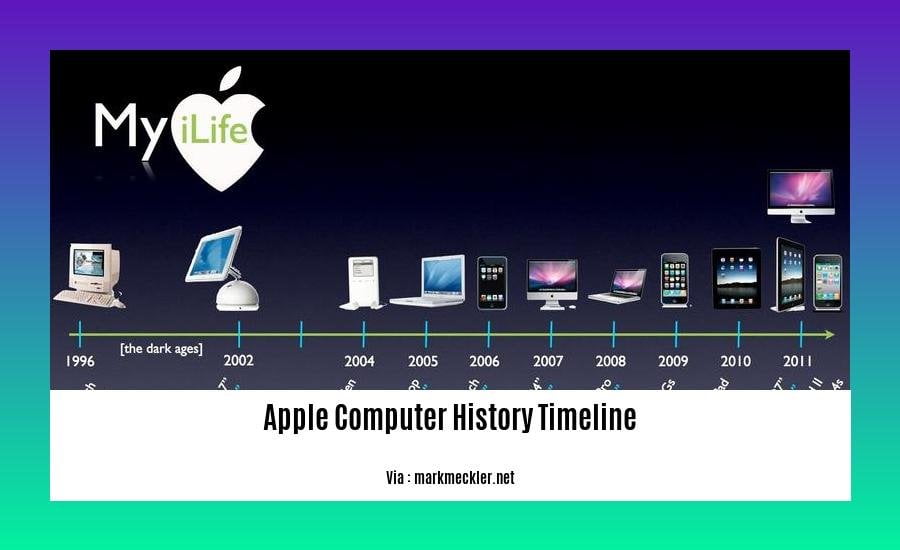
Apple Computer History Timeline
Our journey begins in 1976, in a garage where Steve Jobs, Steve Wozniak, and Ronald Wayne joined forces to launch Apple Computer. Their first product, the Apple I, was a rudimentary personal computer that hinted at the innovation to come.
Fast forward to 1977, and the Apple II explodes onto the scene, igniting the home computing revolution. Its user-friendly design and vibrant color graphics captivated consumers, propelling Apple into the tech spotlight.
1984 marked a paradigm shift with the arrival of the Macintosh. This groundbreaking computer introduced the world to the intuitive graphical user interface and mouse, making technology accessible to the masses. The Macintosh wasn’t just a product; it was a cultural phenomenon that redefined the relationship between humans and computers.
While Apple’s journey wasn’t without its bumps—including Steve Jobs’s temporary departure—the company’s resilience proved remarkable. Jobs’s return in 1997 ushered in a golden age of innovation. The world witnessed the launch of the colorful iMac in 1998, the iconic iPod in 2001, the revolutionary iPhone in 2007, and the sleek iPad in 2010.
These weren’t just products; they were cultural touchstones that seamlessly integrated into our lives. The anticipation surrounding each new iPhone release became legendary, a testament to Apple’s ability to captivate and inspire.
Today, Apple continues its legacy of innovation with the Apple Watch, Apple TV, and a future brimming with possibilities. The company’s unwavering commitment to pushing technological boundaries ensures that the story of Apple is far from over.
Here’s a concise timeline of Apple’s most significant milestones:
| Year | Milestone |
|---|---|
| 1976 | Apple Computer founded |
| 1976 | Apple I, the first personal computer, released |
| 1977 | Apple II takes the world by storm |
| 1984 | Macintosh revolutionizes computing |
| 1997 | Steve Jobs returns to Apple |
| 1998 | iMac brings a splash of color to desktops |
| 2001 | iPod transforms music listening |
| 2007 | iPhone ushers in the smartphone era |
| 2010 | iPad defines the tablet computing experience |
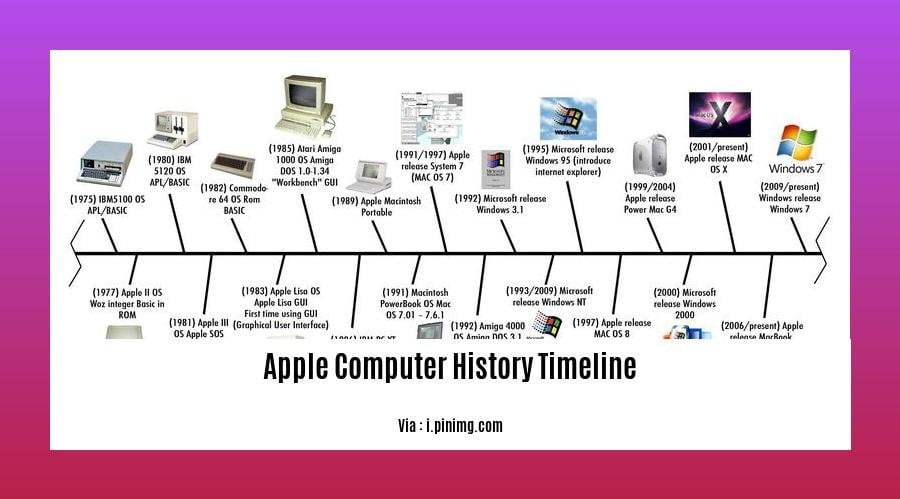
Apple II Revolution: Dawn of the Personal Computing Era
Launched in 1977, the Apple II wasn’t just another computer; it was a cultural phenomenon that ignited the home computing revolution. Unlike its predecessors, the Apple II was approachable and user-friendly. Its bright color graphics, intuitive interface, and the ability to run games made it an instant hit with consumers.
But the Apple II’s impact extended far beyond entertainment. Its expandability, achieved through peripheral cards, unlocked a world of possibilities. Users could print documents, connect to the nascent internet, and even delve into the world of programming. The Apple II became a gateway to the digital world, empowering individuals with unprecedented access to technology.
Here’s why the Apple II was so revolutionary:
| Feature | Impact |
|---|---|
| Graphical User Interface | Simplified computing, making it accessible to all |
| Color Graphics | Enhanced gaming and software experiences |
| Expandable Design | Enabled diverse applications and future-proofing |
The Apple II’s impact was profound. It democratized computing, transforming it from a niche technology to a household staple. Over six million units were sold, solidifying Apple’s position as a major force in the tech industry. The Apple II’s legacy is deeply intertwined with the personal computer revolution, paving the way for the technology-driven world we live in today.
The Macintosh: A Paradigm Shift in User Experience
Key Takeaways:
- The Macintosh’s intuitive design and user-friendly interface revolutionized the way people interacted with computers.
- Apple’s focus on aesthetics and usability set a new standard for the tech industry.
- The Macintosh’s legacy continues to shape modern computing, influencing everything from smartphones to operating systems.
Launched in 1984, the Macintosh wasn’t merely a new computer; it was a bold departure from the complex and intimidating machines of the past. Apple envisioned a computer that was accessible to everyone, regardless of their technical expertise, and the Macintosh embodied this vision.
At the heart of the Macintosh revolution was the groundbreaking graphical user interface (GUI). Instead of memorizing cryptic commands, users could now interact with their computers through intuitive icons, windows, and menus. The mouse, a novelty at the time, became an extension of the user’s hand, allowing for effortless navigation and interaction.
Apple’s obsessive focus on user experience, dubbed the “squishy concept,” extended beyond the interface. The Macintosh’s sleek, all-in-one design stood in stark contrast to the bulky, beige boxes that dominated the market. Apple recognized that technology should be both powerful and aesthetically pleasing, a philosophy that continues to guide its design ethos.
The Macintosh’s impact on the tech industry was seismic. Its user-friendly approach set a new standard that forced competitors to rethink their own products. The Macintosh’s legacy can be seen in the intuitive operating systems, touch-screen interfaces, and user-centered designs that define modern computing.
From iPod to iPhone: Apple’s Dominance in the Mobile Era
The launch of the iPod in 2001 marked a pivotal moment in Apple’s history and the music industry as a whole. With its sleek design, intuitive click wheel, and the ability to carry “1,000 songs in your pocket,” the iPod revolutionized the way people listened to and experienced music. It wasn’t just a device; it was a cultural phenomenon that propelled Apple to the forefront of the digital music revolution.
Then came the iPhone in 2007, a device that redefined the mobile phone and ushered in the era of smartphones. With its expansive touchscreen display, intuitive multi-touch interface, and access to a revolutionary app ecosystem, the iPhone transcended its function as a communication device and became an indispensable tool for work, entertainment, and connecting with the world.
The success of both the iPod and iPhone can be attributed to Apple’s relentless pursuit of innovation, its focus on user experience, and its ability to anticipate and meet the evolving needs of consumers. Apple didn’t just create products; it created experiences that seamlessly integrated into people’s lives.
Apple’s dominance in the mobile era is a testament to its ability to seamlessly blend cutting-edge technology with intuitive design. The iPod and iPhone weren’t just technological advancements; they were cultural touchstones that reshaped the way we consume media, connect with each other, and navigate the world around us.
- Senior at What Age: Benefits & Eligibility Guide - March 29, 2025
- Unlocking Senior Benefits: How Old is a Senior? Your Complete Guide - March 29, 2025
- Master Russian Politeness:A Guide to Saying Please - March 29, 2025
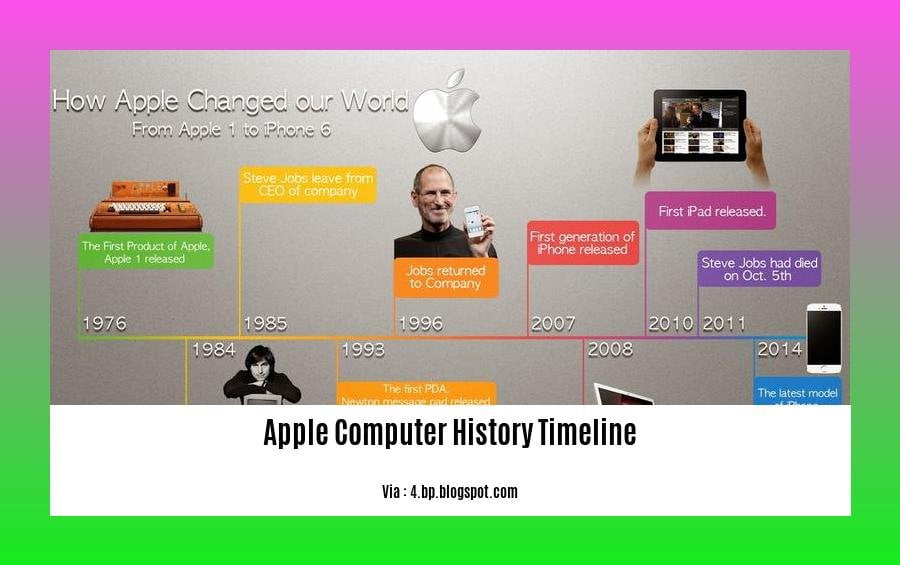
![Unveiling Apple's Legacy: A Comprehensive Timeline of Innovation [apple company history timeline] apple-company-history-timeline_2](https://www.lolaapp.com/wp-content/uploads/2023/12/apple-company-history-timeline_2-150x150.jpg)
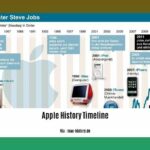
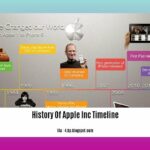
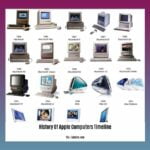

![The Evolution of the Apple Store: A Comprehensive Timeline of Retail Innovation [Apple Store History Timeline] apple-store-history-timeline_2](https://www.lolaapp.com/wp-content/uploads/2023/12/apple-store-history-timeline_2-150x150.jpg)









